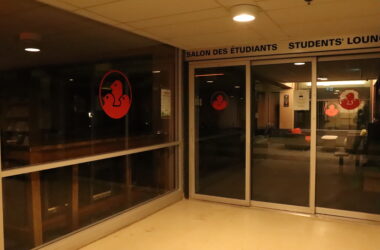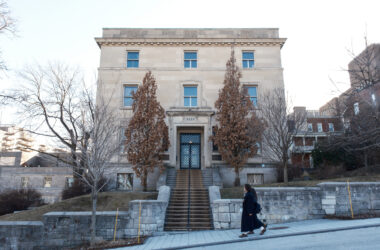The Engineering Undergraduate Society passed a motion at their council meeting on November 9 finalizing the incorporation of the Architecture Students Association as their seventh departmental society.
The ASA held a formal referendum on the potential incorporation, which ended the week before council. Sixty-five per cent of ASA students cast ballots, with 90 per cent of the votes in favour of the merger.
“There were a couple conversations over the summer, and then we came in September kind of knowing that we wanted this process to take place, so I researched with McGill how this could be worked out,” said EUS President Daniel Keresteci. “It is something that people have always kind of looked to as an option, but the right pieces never really fit together.”
The ASA’s main motivation to join the EUS was their lack of formal recognition at McGill and absence of a Memorandum of Agreement (MoA).
“The main problem is that the ASA is currently not a formally recognized group in McGill. We don’t have a MoA with McGill, and we lack any kind of formal affiliation to any other groups or to the university itself,” said ASA President Kyle Burrows. “It just became almost a necessity at some point; we realized that in order to continue to serve the students it was important to connect ourselves to McGill.”
Though some think that the new agreement is connected to the closure of the Architecture Café, Burrows claims this is a separate issue that only served as a wake-up call for the consequences of unofficial relations with the McGill administration. He added that the ASA was fortunate to be able to open and manage the café for so many years without a MoA from the university.
“[Joining the EUS] was something that we started investigating before that issue came up, but in the memorandum issued from [Deputy Provost (Student Life and Learning)] Morton Mendelson’s office regarding the numbers of the Architecture Café it mentions as one of the reasons that the Architecture Café was not a formally recognized group at McGill,” Burrows said.
“The space is being renovated as a student space by Prof. Jemtrud and so we’ll see what happens once we have this affiliation with the EUS,” he added regarding the former café.
Being part of the EUS, a formally recognized student organization, grants the ASA the corporate status and accreditation to effectively represent its students through actions like negotiating with the university on formal matters. It also allows them to charge fees to their students and take advantage of the resources available to the EUS.
The merger, Keresteci said, will also allows Architecture students to participate in events held by the EUS.
By the end of last year, the EUS had already added a specific clause to its constitution allowing the addition of departmental societies.
“It was something that people always [considered] an option, but the right pieces never fit together, so when our executive came in Allan our VP Internal was the first one to reach out to the ASA.”
The final step in the agglomeration will be to ensure that the constitutions of the EUS and the ASA are aligned.
“The ASA is now an affiliated departmental society of the EUS, their constitution remains the same but they are now in the whole structure of the EUS,” Keresteci said.
According to Burrows, the way the ASA is currently run will not significantly change after its merger with the EUS. They will maintain the majority of their autonomy, but will now benefit from the connection the EUS has to McGill.
Alexandre LaPierre, a U2 Architecture student, actively supported the motion at council and thinks it was a step in the right direction.
“I think it is going to benefit the students a lot, as the president of the EUS said it will increase the sense of community between the EUS and the ASA,” LaPierre said. “So I think all the students are going to benefit from that.”
Due to similarities that exists between the study of architecture and of engineering both the ASA and the EUS are genuinely looking forward to their fusion.
“Career-wise, architects and engineers will be working together for the rest of their lives,” Burrows said.








